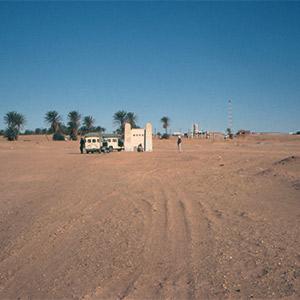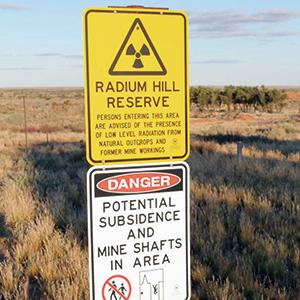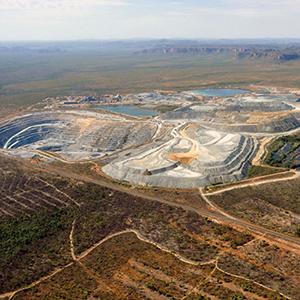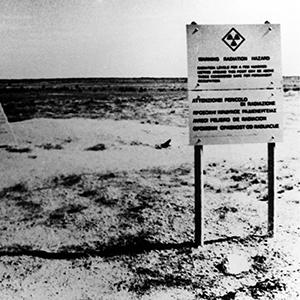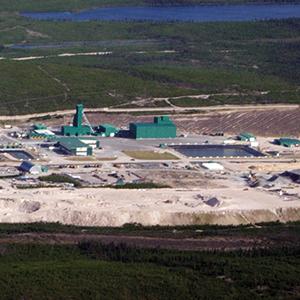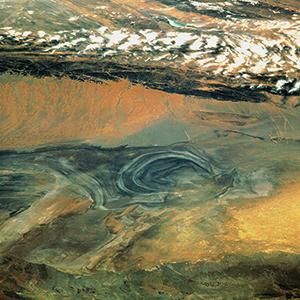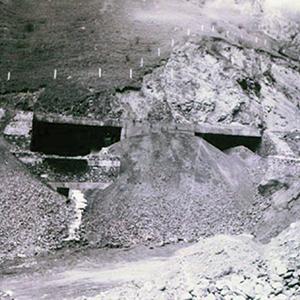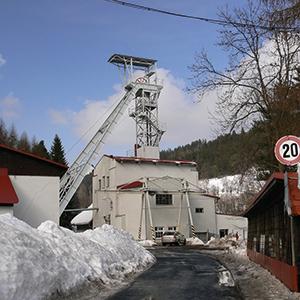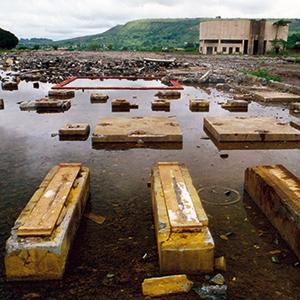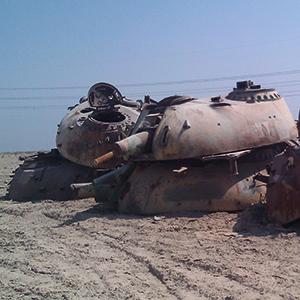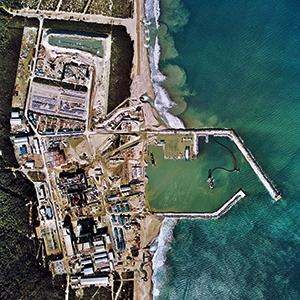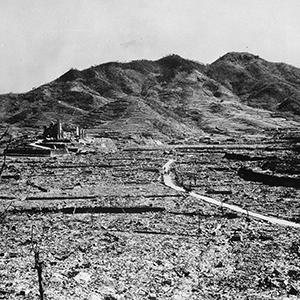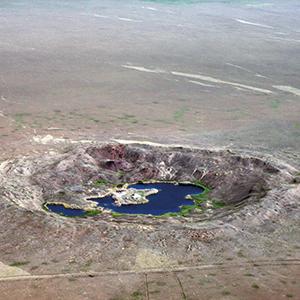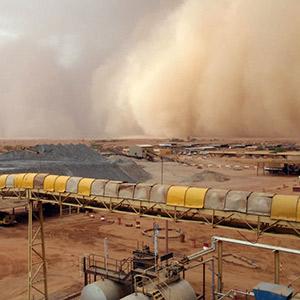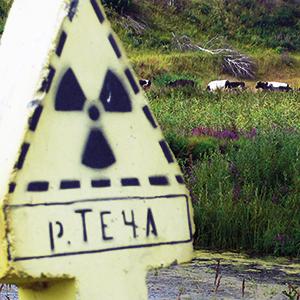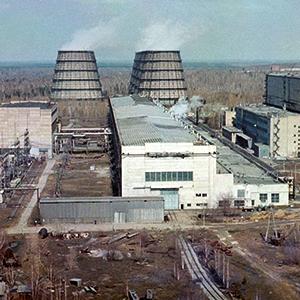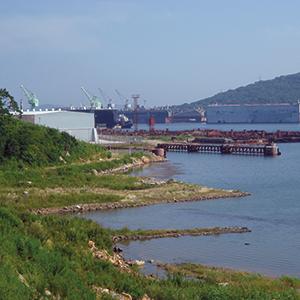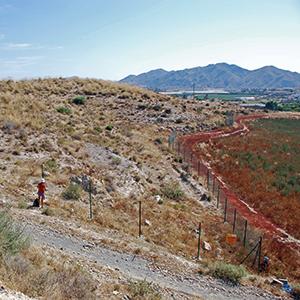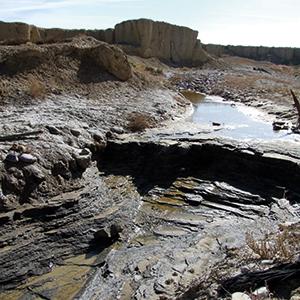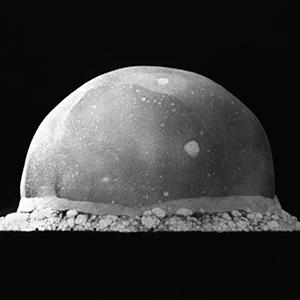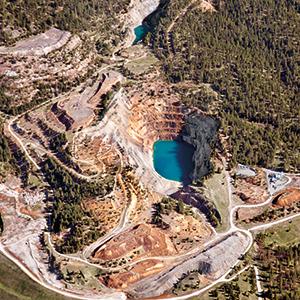Hanford, United States

At the Hanford Site, the U.S. produced most of its weapons-grade plutonium during the Cold War. Although the compound was decommissioned in 1988, it remains the most radioactively contaminated site in the Western Hemisphere.
Photo: Aerial view of the Hanford Site on the shore of the Columbia River (1960). On the right-hand side is the so-called N-Reactor, which produced plutonium for U.S. nuclear weapons and began generating electricity for the general power grid in 1966. © United States Department of Energy
History
The Hanford Site was built in the 1940s to produce plutonium for the U.S. nuclear weapons program. Located near the city of Richland in Washington State, the compound stretches over an area of more than 150,000 hectares and consists of more than 500 buildings, including nine nuclear reactors. Hanford supplied the material for the Trinity Test, the world’s first nuclear detonation, in July of 1945. It also provided the plutonium for “Fat Man,” the bomb which destroyed Nagasaki one month later. In the following four decades, the Hanford Nuclear Site produced more than 67 metric tons of plutonium for the U.S. nuclear arsenal.
In 1986, the U.S. Department of Energy, in response to public pressure and a request under the Freedom of Information Act, released 19,000 pages of previously classified documents that revealed, among other things, that radioactive releases from Hanford had contaminated air, groundwater, soil and the Columbia River. Fallout had spread more than 200 radioactive isotopes over Oregon, Idaho, California, Montana and Canada. In December 1949, Hanford scientists had deliberately released between 259 and 444 Tera-Becquerel (1 TBq = 1 trillion Becquerel) of radioactive iodine-131 in order to test monitoring equipment for radiation doses. The amount of iodine-131 released in these “experiments” was 350 to 600 times more than the total amount released during the Three Mile Island nuclear meltdown (0.74 TBq).
Health and environmental effects
Workers at Hanford were exposed to more than 200 radioactive isotopes including 0.07 TBq plutonium-239, 1.55 TBq cesium-137 and 28.3 TBq radioactive strontium. Plutonium, ruthenium and other radionuclides were detected as far away as Spokane and Mount Rainier. The main danger to the general public, however, came from more than 40 TBq of iodine-131 released between 1944 and 1972, which contaminated air, soil and foodstuff.
According to the Hanford Environmental Dose Reconstruction Project, run in cooperation with the U.S. Centers for Disease Control, the thyroid of a child living close to Hanford could have received a cumulative dose of 2,350 mSv (confidentiality interval 540–8,700 mSv), equivalent to about 670 chest-CT examinations (average thyroid dose 3.5 mSv). A significant number of children may have developed thyroid cancer due to Hanford nuclear fallout, but no epidemiological studies were ever performed on the affected population.
Especially affected by radioactive contamination were native peoples living downwind or downriver from Hanford: the Colville, Coeur d’Alene, Kalispel, Kooten-ai, Nez Perce, Spokane, Umatilla, Warm Springs and Yakama. The 7,400,000 TBq of highly radioactive waste stored in Hanford amount to about 60 % of the total U.S. nuclear waste. According to the U.S. Department of Energy, more than 200 million liters of radioactive and chemical waste are stored in leaking underground tanks on the Hanford Nuclear Site. Due to leaks and improper disposal, an estimated 3.5 million liters of radioactive effluent have already contaminated the groundwater over an area of more than 123,000 acres. It is unclear, whether this contaminated water has already reached the Columbia River. As radioactively contaminated water was deliberately pumped into the river until 1971, high levels of zinc-65, arsenic-76, phosphorus-32, sodium-24 and neptunium-239 have been found downstream from Hanford.
Outlook
Ever since plutonium production in Hanford ended in 1988, the “largest civil works project in the history of mankind” is costing tax-payers more than $2 billion per year and is slated to continue until 2052. An additional safety threat is posed by the aging nuclear power plant at Hanford.
Surprisingly little epidemiological research has been done on the population affected by radioactive contamination and the full extent on public health may never be known. The people living around Hanford, especially the socially marginalized natives, are all Hibakusha, as their health has been compromised by the fanatical longing for ever larger and more destructive nuclear arsenals.
References
- “Hanford Facts.” Website of the Physicians for Social Responsibility (PSR). www.psr.org/chapters/washington/hanford/hanford-facts.html
- Pitzke M. “Hanford Nuclear Waste Still Poses Serious Risks.” Spiegel Online, March 24, 2011. www.spiegel.de/international/world/0,1518,752944,00.html
- “The Release of Radioactive Materials from Hanford: 1944-1972.” Hanford Health Information Network, Washington State Department of Health, 1997. This study was deleted from the Washington State Department of Health website in 2013 and is now only available on this site: http://hanford-downwinders.tribe.net/thread/788190be-1d41-4e64-bc5b-178494b07e54
- “Radiation Dose Estimates from Hanford Radioactive Material Releases to the Air and the Columbia River.” Hanford Environmental Dose Reconstruction Panel, April 1994. www.cdc.gov/nceh/radiation/hanford/dose.pdf
- “Hanford Tribal Service Program.” Website of the Northwest Portland Area Indian Health Board. www.npaihb.org/programs/project/arch_hanford_tribal_service_program







